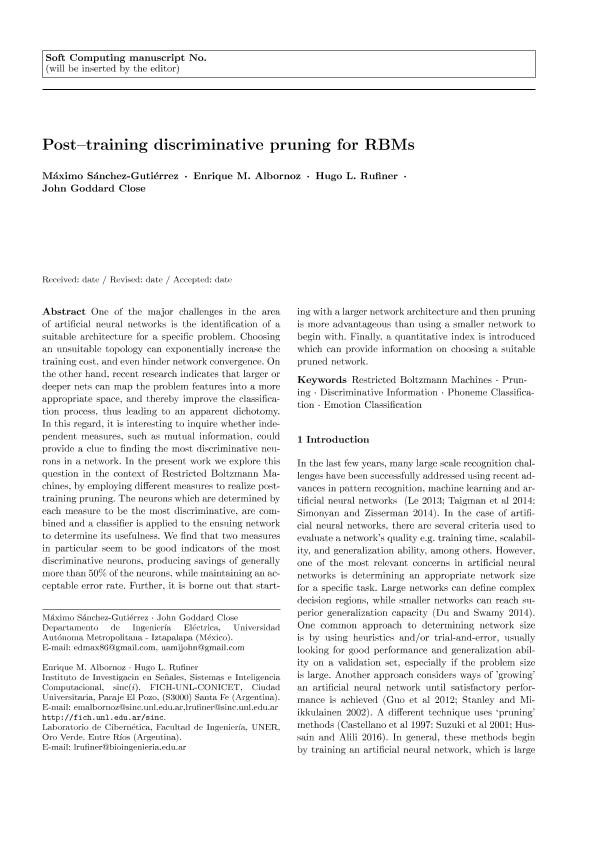Artículo
Post-training discriminative pruning for RBMs
Fecha de publicación:
08/2017
Editorial:
Springer
Revista:
Soft Computing
ISSN:
1432-7643
e-ISSN:
1433-7479
Idioma:
Inglés
Tipo de recurso:
Artículo publicado
Clasificación temática:
Resumen
One of the major challenges in the area of artificial neural networks is the identification of a suitable architecture for a specific problem. Choosing an unsuitable topology can exponentially increase the training cost, and even hinder network convergence. On the other hand, recent research indicates that larger or deeper nets can map the problem features into a more appropriate space, and thereby improve the classification process, thus leading to an apparent dichotomy. In this regard, it is interesting to inquire whether independent measures, such as mutual information, could provide a clue to finding the most discriminative neurons in a network. In the present work we explore this question in the context of Restricted Boltzmann Machines, by employing different measures to realize post-training pruning. The neurons which are determined by each measure to be the most discriminative, are combined and a classifier is applied to the ensuing network to determine its usefulness. We find that two measures in particular seem to be good indicators of the most discriminative neurons, producing savings of generally more than 50% of the neurons, while maintaining an acceptable error rate. Further, it is borne out that starting with a larger network architecture and then pruning is more advantageous than using a smaller network to begin with. Finally, a quantitative index is introduced which can provide information on choosing a suitable pruned network.
Archivos asociados
Licencia
Identificadores
Colecciones
Articulos(SINC(I))
Articulos de INST. DE INVESTIGACION EN SEÑALES, SISTEMAS E INTELIGENCIA COMPUTACIONAL
Articulos de INST. DE INVESTIGACION EN SEÑALES, SISTEMAS E INTELIGENCIA COMPUTACIONAL
Citación
Sánchez Gutiérrez, Máximo; Albornoz, Enrique Marcelo; Rufiner, Hugo Leonardo; Close, John Goddard; Post-training discriminative pruning for RBMs; Springer; Soft Computing; 8-2017
Compartir
Altmétricas




